Taming the Monsters of Halloween Waste
Air Date: Week of October 17, 2025
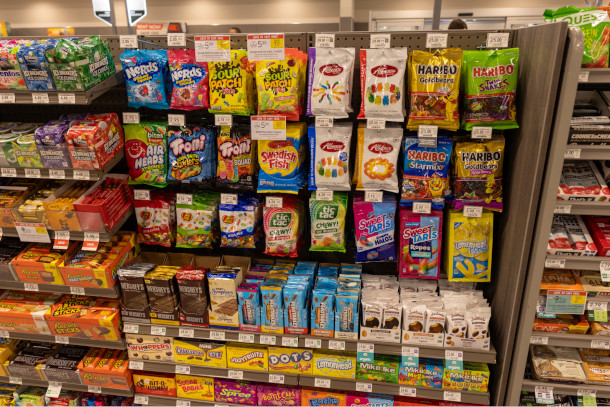
Americans are projected to spend more than 3.9 billion dollars on over 600 million pounds of candy this Halloween. (Photo: Nielsoncaetanosalmeron, Wikimedia Commons, CC BY SA 4.0)
One of the most frightening aspects of Halloween is the monstrous amounts of waste it can generate. Katie Brewer of Greater Laingsburg Recyclers in Michigan joins Host Jenni Doering to share ideas for making Halloween a little more sustainable, from recycling candy wrappers, to composting pumpkins, to thrifting costumes.
Transcript
CURWOOD: It’s Living on Earth, I’m Steve Curwood.
DOERING: And I’m Jenni Doering.
Halloween is almost here, and it wouldn’t be the same without the irresistible Reese’s, Milky Ways, and KitKats.
https://www.youtube.com/watch?v=k8MLtrhEN-A
[candy wrapper crackle sounds] [doorbell] Trick or treat! [crackle, crunch sounds] Mmmm…thank you!
DOERING: But what to do about all those candy wrappers? Every year for Halloween, Americans purchase more than 600 million pounds of candy and over 1.3 billion pounds of pumpkins. Here with some ideas for taming the downright frightening levels of Halloween waste is Katie Brewer of Greater Laingsburg Recyclers in Michigan. They’ve been volunteer-led since 1988 and built their first recycling center in 2020 after being an entirely outdoor operation for decades. Katie joins me now. Welcome to Living on Earth!
BREWER: Thank you. Thanks for having me.
DOERING: So we wanted to talk to you today about how we might make Halloween a little bit more sustainable. Can you tell us a bit about your programs and initiatives that are designed to combat holiday waste?
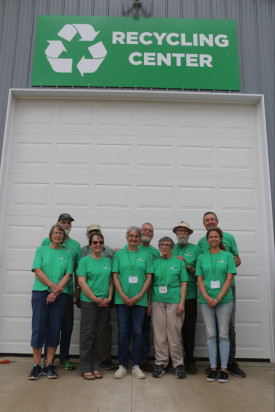
Katie Brewer, front row, far right, and other volunteer members of Greater Laingsburg Recyclers in Michigan host recycling drives four times a month. (Photo: Katie Brewer)
BREWER: Sure. So we're very excited. We love Halloween. So one thing we've been doing, and I think this is our fourth year is collecting candy wrappers. We do that through TerraCycle. It's a free program. So they offer a candy wrapper box specific for Halloween, but they actually let you keep it all fall. So then you can do Christmas and even into Valentine's Day, because all of those holidays involve candy. So people can collect candy wrappers and then bring them to us. We just ask that they be empty, and we collect those, and then send them back through TerraCycle, who then recycles them.
DOERING: I mean, just thinking about, you know, kids going out trick or treating and just how much candy they can collect, and then all the candy wrappers from that, and then there's usually a ton of leftover candy that gets brought into offices and stuff. That's a lot of candy wrappers. And then what happens to these recycled candy wrappers?
BREWER: So the idea, right, is to keep them out of the landfill. They are collected and cleaned through TerraCycle and then turned into other plastic items. So one example would be like, doggy doo-doo bags, that kind of thing. So that's always a good message to send kids too. I think it's helpful that they can see the whole circular economy, like this is how it starts. This is where it goes, and then this is how it ends up.
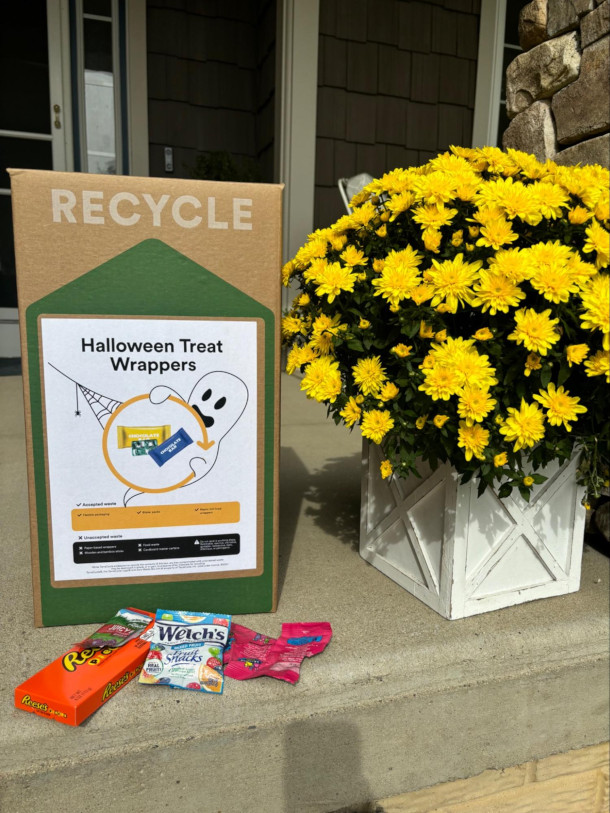
Greater Laingsburg Recyclers of Laingsburg, Michigan partners with TerraCycle to offer candy wrapper recycling, diverting the waste from landfills. (Photo: Katie Brewer)
DOERING: So I understand that your recycling program, Greater Laingsburg Recyclers, is trying something new this year.
BREWER: Yes.
DOERING: What is “Pitch the Pumpkins”?
BREWER: So we started thinking about an issue in that we have, like, a small bin to collect our food scraps that gets turned into compost. And what happens if someone brings their 12 pumpkins from their porch, it would fill up our entire bin. And so at first we were worried, and we're like, we have to tell people they can't bring their pumpkins. And we're like, wait, is there a better solution? And so we've seen in bigger cities where they collect people's pumpkins and gourds after Halloween. And we thought, well, why can't we do that? So we actually had a connection with someone that has dumpsters and trailers. They're DBD dumpsters here in the Laingsburg area, and we asked them if they would be willing to donate a dumpster at all of our drives in November. So four recycling drives, we will have a dumpster available to collect pumpkins and gourds. And then we partnered with the city, who has, like, a yard waste collection compost area, and they are going to allow us to bring the pumpkins there, and they will be turned into compost, which is amazing, and kept out of the landfill. So we're super excited to do that.
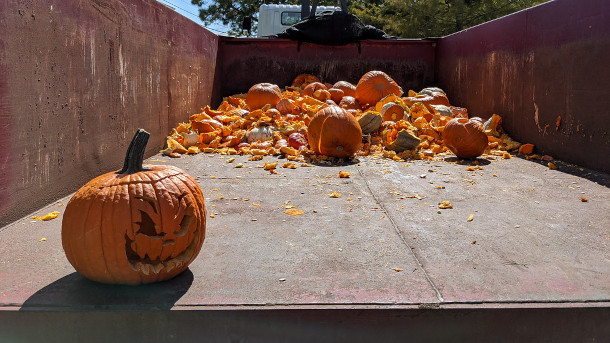
Over 1.3 billion pounds of pumpkins are purchased in the United States each Halloween season. (Photo: Bart Everson, Flickr, CC BY 2.0)
DOERING: I just love that mindset that you know, what was at first, maybe a problem, you guys turned into an opportunity. By the way, how big is Laingsburg?
BREWER: So the city of Laingsburg's population is 1600 but we are not limited to Laingsburg, like we are open to all communities. So we have people driving from a half an hour away, you know, other small towns that don't have recycling or don't have food scrap collection, and we're open to anyone, anyone who would like to come out and bring their items to us or volunteer. We're always looking for new volunteers. That is what keeps us going. It's really important to our mission.
DOERING: So you guys are a really small town, plastic waste and just waste in general is a huge problem globally. What keeps you going, in terms of feeling that this is really important to you, to be collecting candy wrappers and pumpkins and composting them and things like that?
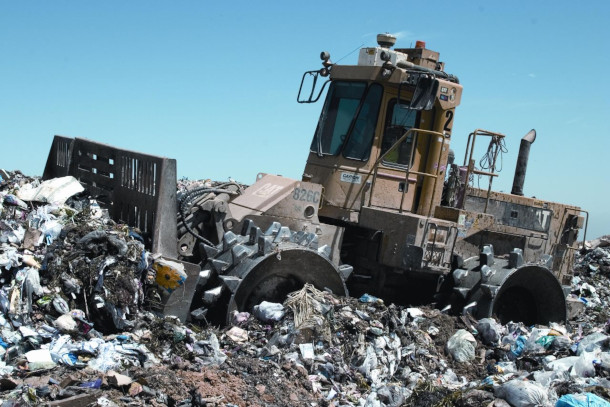
Over $2 billion dollars is spent annually in the US on Halloween candy, with most of the wrappers ending up in landfills. (Photo: Ropable, Wikimedia Commons, public domain)
BREWER: Yeah, that's a tricky question. I think seeing the volume that we collect really makes you feel like you're making a difference, like the amount of water bottles. And it's amazing how much we do divert from the landfill. And knowing that if other small towns are making an effort, you know, we don't have curbside recycling in our town. I think Michigan, for a long time, was really low as far as their recycling rates. We are doing so much better now, just in the past five years, we've really increased that. And a lot of that, I think, is awareness, reaching out to kids and going into the school and seeing their reusable water bottles sitting on their desks, and having teachers who are passionate about collecting recycling in the schools. That is something that's really powerful and it keeps me going, so like the little things for sure.
DOERING: So how could other communities use your model to create a volunteer recycling program?
BREWER: So when we decided to build our recycling center, we wanted to make education really important and be kind of like an example for other communities to start a program like this. So we have had other groups come in and look at our facility and so that you know you're not recreating the wheel every time. I know there's some laws, some things happening in Michigan right now, where there has to be recycling for every community within the next few years, so smaller towns that don't have curbside are going to have to have some kind of recycling available for everyone, and so we're a great model for that, and we're more than happy to talk to other towns about how we did it.
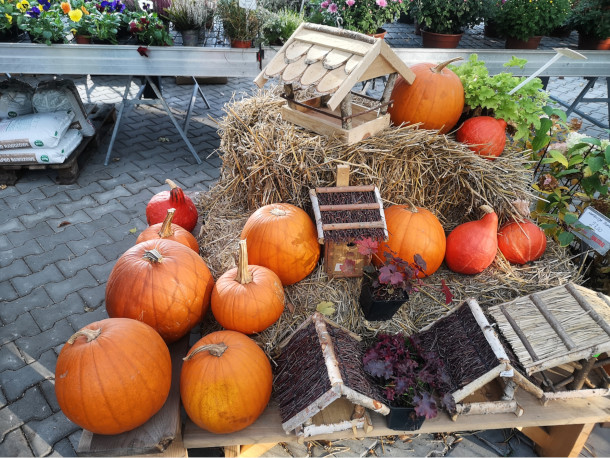
Incorporating natural decorations or buying reusable ones that will last more than one Halloween season can help shift waste away from landfills. (Photo: Silar, Wikimedia Commons, CC BY SA 4.0)
DOERING: Do you have any other tips Katie, for celebrating a sustainable Halloween?
BREWER: Absolutely. So I think one of the best tips out there is, if you're going to decorate your house, decorate with nature, use pumpkins, gourds. Go out and pick leaves up, things that can be composted eventually. If you are going to go out and purchase decorations, make them something that will last for years and years to come. You know, I think that's important. It's okay to reuse things. That's what we should strive for. I think thrifting is a great thing. I see my kids get excited about that, like reusing costumes, do a costume swap. There's so much you can do.
DOERING: Yeah, and I think I hear you saying that it doesn't have to be a sacrifice. It can actually be fun, like your kids love thrifting, and they get to do that to find their Halloween costumes.
BREWER: Absolutely, absolutely.
DOERING: Katie Brewer volunteers and serves on the board of Greater Laingsburg Recyclers. Thank you so much, Katie, and Happy Halloween!
BREWER: Thank you.
Links
Learn more about how you be a sustainable Halloween participant here
Living on Earth wants to hear from you!
Living on Earth
62 Calef Highway, Suite 212
Lee, NH 03861
Telephone: 617-287-4121
E-mail: comments@loe.org
Newsletter [Click here]
Donate to Living on Earth!
Living on Earth is an independent media program and relies entirely on contributions from listeners and institutions supporting public service. Please donate now to preserve an independent environmental voice.
NewsletterLiving on Earth offers a weekly delivery of the show's rundown to your mailbox. Sign up for our newsletter today!
 Sailors For The Sea: Be the change you want to sea.
Sailors For The Sea: Be the change you want to sea.
 The Grantham Foundation for the Protection of the Environment: Committed to protecting and improving the health of the global environment.
The Grantham Foundation for the Protection of the Environment: Committed to protecting and improving the health of the global environment.
 Contribute to Living on Earth and receive, as our gift to you, an archival print of one of Mark Seth Lender's extraordinary wildlife photographs. Follow the link to see Mark's current collection of photographs.
Contribute to Living on Earth and receive, as our gift to you, an archival print of one of Mark Seth Lender's extraordinary wildlife photographs. Follow the link to see Mark's current collection of photographs.
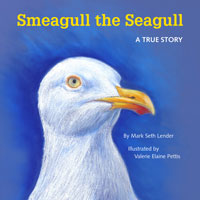 Buy a signed copy of Mark Seth Lender's book Smeagull the Seagull & support Living on Earth
Buy a signed copy of Mark Seth Lender's book Smeagull the Seagull & support Living on Earth

